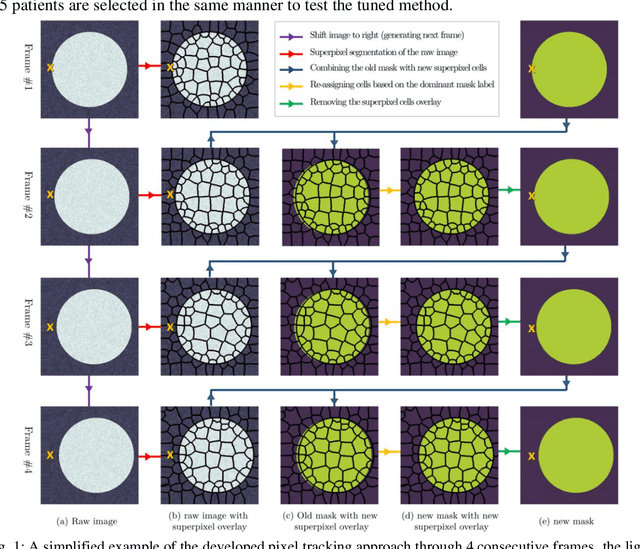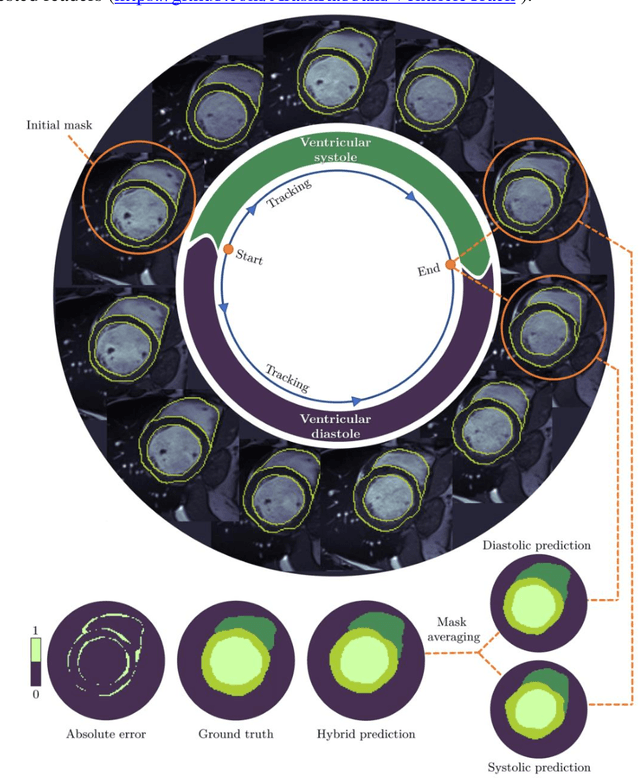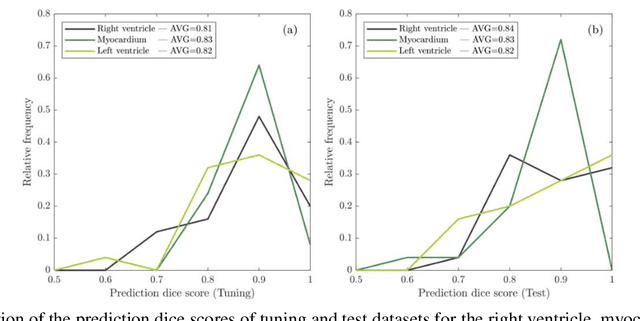Temporal extrapolation of heart wall segmentation in cardiac magnetic resonance images via pixel tracking
Paper and Code
Jul 30, 2022


In this study, we have tailored a pixel tracking method for temporal extrapolation of the ventricular segmentation masks in cardiac magnetic resonance images. The pixel tracking process starts from the end-diastolic frame of the heart cycle using the available manually segmented images to predict the end-systolic segmentation mask. The superpixels approach is used to divide the raw images into smaller cells and in each time frame, new labels are assigned to the image cells which leads to tracking the movement of the heart wall elements through different frames. The tracked masks at the end of systole are compared with the already available manually segmented masks and dice scores are found to be between 0.81 to 0.84. Considering the fact that the proposed method does not necessarily require a training dataset, it could be an attractive alternative approach to deep learning segmentation methods in scenarios where training data are limited.
 Add to Chrome
Add to Chrome Add to Firefox
Add to Firefox Add to Edge
Add to Edge